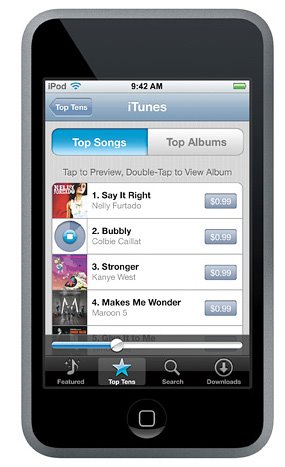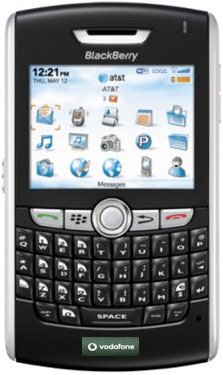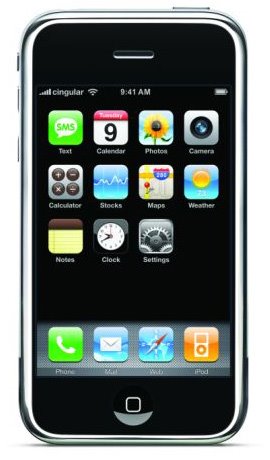For me the main attraction is the quality of the pictures it takes. There are very few negative points about this camera and I would be happy to own it if I was looking for a point and shoot digital camera.
Canon Powershot A3100 IS
For me the main attraction is the quality of the pictures it takes. There are very few negative points about this camera and I would be happy to own it if I was looking for a point and shoot digital camera.
Nikon Coolpix L11
It has a limited set of features, but this helps with ease of use. In terms of looks it resembles a smaller Digital SLR. The Coolpix L110 is a good choice if you need a lot of zoom and total simplicity.
12 megapixels
15x optical zoom lens
High Definition movies
3 inch LCD screen
AA batteries
Nokia X6
Running the latest version of Symbian^1 the Nokia X6 16GB boasts up to 18 days standby time, 11.5 hours talktime (GSM), 4.5 hours of video playback and a whopping 35 hours of music playback! That’s enough time to listen to roughly 12 per cent of the tracks stored on the device.
Images are taken care of with a 5-megapixel camera sporting Carl Zeiss optics and dual LED flash. Shooting videos is a joy, not just because of the camera but the TV-out function enables you to watch your masterpieces on the huge screen, too. And of course, you can edit your videos right there on the device.
The new Nokia X6 is compatible with the all-new Ovi Maps, offering free walk and drive navigation and tons of extras including Michelin and Lonely Planet guides.
Olympus MJU 704
As you will see from my review of picture quality there were two important issues that stop me from being able to recommend this camera. That is a shame as the MJU 7040 scores well for ease of use and I like the features it has as well.
14 megapixels
7x wide angle optical zoom lens
3 inch LCD screen
2cm macro mode
High Definition movies
Canon IXUS 105
In terms of features it has 12 megapixels and a 4x wide angle lens. It feels like it is well made and is priced at a small premium to many other brands.
The IXUS 105 handles well. There are no real problems when it comes to ease of use. Key features such as flash are controlled through buttons on the back of the camera with zoom being applied via a ring on the top of the IXUS 105.
There are four colour variations: silver, pink, brown and a light blue.
I like this camera it is a very good choice if you are looking for a good quality, small camera.
12 megapixels
4x wide angle optical zoom lens
2.7 inch LCD screen
Image Stabilisation
3cm macro mode
Standard Definition movies
Nikon Coolpix S3000
The Coolpix S3000 handles well. It is a neat little camera and I like the simple design. Nikon have incorporated a wide angle lens. Apart from that the emphasis is more of simplicity than features, although you do get access to image stabilisation.
4x wide angle zoom lens
Standard Definition movies
2.7 inch LCD screen
Lithium ion battery
Canon throws 4 new PowerShot compacts into the mix
Canon have just unveiled four new members of their PowerShot family. Those include the SX210 IS compact superzoom, the full-touch SD3500 IS (also known as IXUS 210) and the ultra-compact couple SD1400 IS and SD1300 IS (IXUS 130 and IXUS 105).
The Canon SX210 IS comes to succeed the SX200 affordable ultrazoom and is built around a 14 megapixel 1/2.3” CCD sensor and a stabilized 14x zoom lens going from 28 to 392mm in 35mm equivalent.
The SX210 IS also sports a metallic body and is capable of recording 720p video at 30 fps. Its LCD display measures 3” in diagonal and sports 230k pixels.
The touch-driven Canon PowerShot SD3500 IS comes with a 3.5” screen with 460k pixels. Its 1/2.3” CCD sensor has 14.1 million effective pixels and its 5x zoom lens stretches from 24 to 120mm. The video recording goes as high as 720p at 30 fps and the compact body only measures 99 x 56 x 22 mm.
The ultra-compact duo SD1400 IS and SD1300 IS have two different 1/2.3” sensors – the SD1400 IS sports 14 megapixels while the SD1300 IS has “only” 12. They do however share a relatively fast (F/2.8-5.9) 4x zoom lens covering the 28 -112mm range.
The SD1400 IS also has 720p video recording to offer, while the SD1300 IS settles for VGA.
40 MP medium format Pentax 645D revealed, yours for 9400 US dollars
After five long years of development and several months of teasing, Pentax finally revealed their 645D medium format camera. Built around a 40 megapixel 44 x 33 CCD sensor, the Pentax 645D sports a dust and water-resistant body with solid magnesium-steel-alloy frame and reinforced glass LCD display with 921k dots.
The extra durability suggests that the Pentax 645D is not meant to be held as a prisoner in some photo studio but taken out. The Japanese company also developed a new high-precision 11-point wide-frame autofocus sensor for their first digital medium format camera.
So now all that it takes for you landscape photos to take a huge leap forward is 9400 US dollars and a plane ticket to Japan as this is the only country to get the 645D at launch.
Sigh, I won’t be among the ones on board that plane as I still can’t save enough cash even for a full-frame DSLR…
Compact DSLR-wannabe Samsung NX10 gets reviewed but not liked
The Samsung NX10 is the most compact interchangeable lens camera with an APS-C sized sensor on the market. But is it also the ultimate camera for photography enthusiasts? Luckily, the review I’ve found gives the answers to most questions that you and I have about the NX10.
Just to have that cleared, I know that there are way smaller and lighter mirrorless interchangeable lens cameras on the market but none of them packs such a large sensor. And sensor size is important usually the larger the sensor, the better the higher ISO results.
NX10 is afraid of the dark
The NX10 APS-C sensor is 50% larger than sensors used in the available Micro Four Thirds cams. That should also mean that noise shouldn’t be such an issue for the NX10 as it is for the Micro Four Thirds Olympus and Panasonic cameras out there.
As it turns out, the mirrorless NX10 achieves better high ISO results than the competition. On the other hand, when compared to DSLRs with similarly sized sensors, the NX10 fails to impress.
And while the helpful JPEG engine gets rid of much of the noise, it also takes away the fine detail. And why would you go for a 14-megapixel DSLR-like camera if images shot with it lack detail?
Luckily, RAW files are able to keep the detail and using the desktop software you can remove the annoying noise and keep images full of detail. By the way, if you’re not going to print posters, NX10’s noise shouldn’t be an issue for you.
NX10 is slow
The other major issue of the Samsung NX10 is its poor buffering. You may need to way for a few second after pressing the shutter before you can use the camera again. And if you decide to shoot videos, camera starts recording a good one second after you tap the shutter button. On top of that, the NX10 happens to cut the last half second of the clip while saving it.
NX10 owners will also miss the in-body image stabilization which some of the competitors come with. However, two of the available lenses are stabilized and the one that isn’t is fast enough (F2.0) to compensate.
NX10 is compact
And that’s a big plus. Well, it may be larger than the PEN E-P2 of Olympus or Panasonic’s GF1 but it still is way smaller than any DSLR out there (the tiny Olympus E-420 included).
As any other camera, the Samsung NX10 has its own flaws but none of them are serious enough to become a real deal breaker. So, if you are looking for a compact DSLR-wannabe and can live with its flaws, the NX10 is an option worth a look.
And here goes the link to dpreview.com’s extensive review of the Samsung NX10.
LG Optimus GT540

The LG Optimus GT540 has been floating around at tradeshows for the past few months, but LG’s just confirmed the final specs and name over on its French blog (Though a post confirming the LG Optimus name has since been removed), along with its intention to echo the LG Viewty design model – LG’s well loved budget range of touchscreen phones.
The LG Optimus GT540 Android phone comes in several colours, white, black, grey and pink, and packs in some reasonable specs for a mid-range Androd mobile: a 420×320 3-inch screen, HSDPA and Wi-Fi for quick surfing, GPS, a three megapixel camera and a 3.5mm audio jack so you can bring your own cans. Unfortunately, the three inch screen is resistive, meaning you might be better off going with a more finger friendly HTC Hero if you want an Android handset at a knockdown price.
LG GW550

The Handset is incorporated with a full QWERTY keyboard and if you want to use Internet then LG GW550 makes it possible with WAP 2.0 web browser that supports HTML and XHTML technologies. This remarkable handset also has EDGE and GPRS technologies for the hi-speed connectivity.
Users can customize the LG GW550 by changing the wallpapers and screen savers alternatively and download from LG App Store. It also equipped with Wireless Bluetooth, cabled USB, 3G HSDPA and HSUPA.
LG GW550 has a 2.4 inches colour screen that provides a 65k colour show with a screen resolution of 320 x 240 pixels. Users can get MicroSD memory card slot that supports up to 8GB. It comprises Quad band technology that covers four GSM networks with HSDPA 900 & 2100.
Samsung Reality

The Samsung Reality supports Samsung’s unique TouchWiz interface, which offers specially designed widgets that allow customers to customize and personalize their phones. The Communities widget allows customers to update social networking sites, post pictures and upload videos to YouTube(TM) and other Web sites instantly. The Samsung Reality also features one-touch widgets, which provide instant access to favorite Web sites on the phone’s full HTML Web browser.
Key features and specifications:
– 3 inch WQVGA (240 x 400) full touch screen
– Horizontal slide-out QWERTY keyboard
– Full suite of messaging options, including text, picture, video and voice messaging; Mobile IM; Mobile Chat; Mobile Email; and Mobile Web Email
– 3.2 megapixel camera with Night Shot Mode; single, multi, panorama, mosaic and frame shot modes; and video capture capabilities
– Photo editing features, including Dynamic Canvas, which supports flash animations in pictures
– Bluetooth® technology with support for headset, hands-free, Dial Up Networking, stereo, phonebook access, basic print, basic imaging, object push for vCard and vCalendar, File Transfer and serial port
– Corporate Email (formerly RemoSync) support for Microsoft Office Exchange so customers can synchronize corporate e-mail, contacts and calendars from their office e-mail
– microSD(TM) card slot with support for up to 16 GB (card bought separately)
Nokia X3

Bluetooth 2.1 is supported with stereo audio profiles for wireless musical enjoyment. Wire fans will be able to use standard headphones thanks to the 3.5mm headphone jack. Full speed USB 2.0 makes music transfer quick and simple and music can be managed via the Ovi Player PC client and Windows Media Player 11.
Messaging is well supported too. Alongside a common inbox for SMS and MMS in conversational view, Nokia Xpress Audio Messaging is supported and Nokia Messaging 2.0 brings users’ existing email and IM accounts to the device.
The Nokia X3 goes on sale in the fourth quarter of 2009 for an estimated retail price of EUR115 before taxes and subsidies.
Nokia 5230
.jpg)
Nokia 5230 Nuron is a smartphone solution for the masses packed with applications, maps with turn-by-turn directions, and more. Operating on T-Mobile’s blazing-quick 3G network, the Nokia Nuron offers dynamic Web browsing and rich experiences on a 3.2″ touch screen. The device is also the first pre-loaded with Ovi Maps, a free turn-by-turn navigation solution from Nokia, and the first to have the Ovi Store pre-loaded, giving consumers access to thousands of compelling applications and games. The Nokia Nuron is expected to be available in the coming weeks exclusively from T-Mobile.
“The Nokia 5230 Nuron is a fantastic product of our collaboration with T-Mobile USA and provides consumers with more compelling mobile experiences as they navigate, watch video, play games and social network,” said Mark Slater, Vice President, Sales, Nokia. “The Nokia Nuron offers U.S. consumers a unique and compelling mobile experience that caters to their everyday needs and enables them to connect to their passions with an affordable 3G touch smartphone.”
The Nokia Nuron is a mobile solution that allows consumers to easily make their way around town, download content and applications to keep them entertained, or help to manage their busy lives. Consumers can keep up with friends and family via IM, text, personal or work e-mail, and offers the ability to easily surf the Web with a full HTML browser.
source (http://phonehunt.com)
Samsung Reclaim - M560

This phone with feature-wise, it's similar to the Exclaim, trading a dual-slide design for a landscape QWERTY slider design.
Key features include Outlook sync, 3.5mm audio jack, 2-megapixel camera with video, EVDO data, memory card slot, and stereo Bluetooth.
Short Specification of Samsung - M560 :
♥ Modes → CDMA 850 / CDMA 1900
♥ Weight 3.5 oz → (99 g)
♥ Dimensions → 3.68" x 2.33" x 0.67" (93 x 59 x 17 mm)
♥ Form Factor Slide
♥ Internal Antenna
♥ Battery Talk → 6 hours max. (360 minutes) 1000 mAh LiIon
♥ Display Type → LCD (Color TFT/TFD)
♥ Resolution → 320 x 240 pixels (QVGA) 2.4" diagonal
♥ Colors → 262,144 (18-bit)
♥ Platform / OS → (proprietary)
♥ Memory → 110 MB(internal memory available to user for storage)
♥ Phone Book Capacity → 600(syncs with Exchange)
☻ Planned Availability: August 16, 2009
☻ FCC ID A3LSPHM560 » (Approved Jun 12, 2009)
iPhone OS: 25 Things It Really Needs (Even Now)
iPad's First-Day Stutters: Problems Charging Over USB and iPhone App Upscaling






